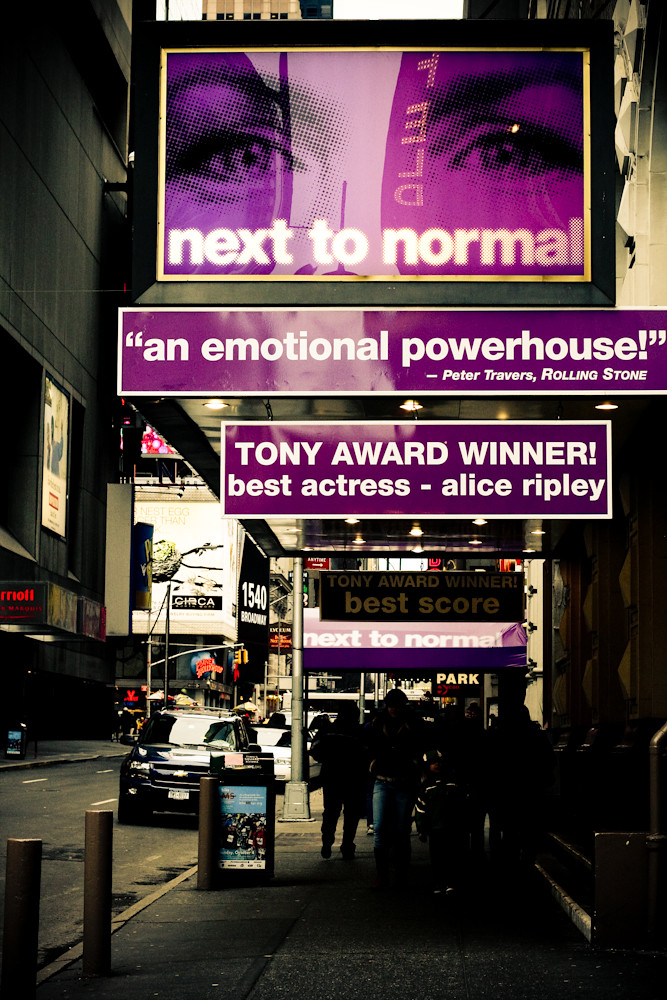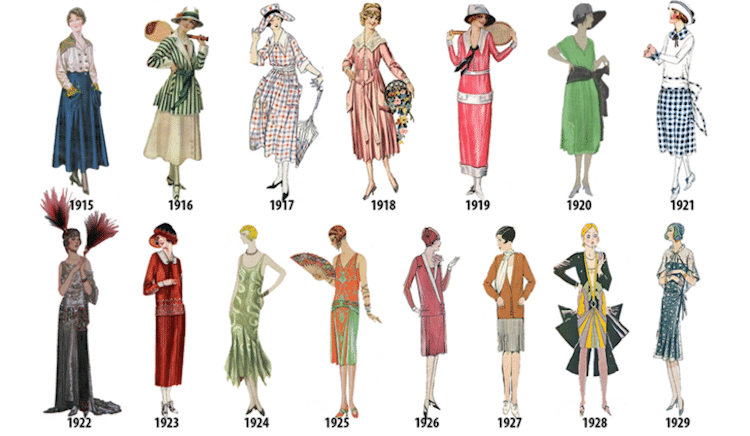Dress code impacts every person’s style, from what you’re seeing online, to what you’re buying in stores. All schools have dress codes that we know and hate, and that we have to abide by when attending school on a day-to-day basis. People get in trouble for wearing skirts too short or shirts too high, for showing too much skin, for wearing hoods. Mrs. Mindy Parisi and Mrs. Kerri Cannavaro share their opinions on this topic, touching on potential bias and judgment in the fashion industry. The amount of restrictions in school settings revolving around dress codes is endless for men and women. Comet reporter, Bella Katynski talks more about this in her article “From Crop Tops to Hoods: The Perception of the EHHS Dress Code.” Bias has always been a large conflict when mentioning the school dress code, but how does bias play into the dress code set by society’s version of “acceptable?”
50’s Fashion
Men and women are restricted in many different ways when it comes to school dress codes, this ideology is
 reflected in society’s standards as well. Looking at what society deemed acceptable for women in the 50s versus now is a perfect example of that. Mrs. Parisi, the fashion teacher here at EHHS, chose the 1950s as her favorite era of fashion to spotlight. In the 50s, everyone dressed nicely and had a put-together look when leaving their houses. Women wore longer skirts, and dresses, and had short, well-kept hair. Nowadays people are accepted even when wearing pajamas because that has been accepted into today’s society. If someone had done that in the 50s, society would have deemed that behavior to be crazy. This mentality of our society creates a normalized “dress code” for men and women. Showing up looking put together in the 50s showed that the women were giving respect to those around them. The dress code is also influenced by the impression that what you are wearing gives off, which many women have to take into account when dressing themselves. This mentality causes women to be restricted from wearing certain things because of interpretations from others around them. This mentality has restricted the population for centuries.
reflected in society’s standards as well. Looking at what society deemed acceptable for women in the 50s versus now is a perfect example of that. Mrs. Parisi, the fashion teacher here at EHHS, chose the 1950s as her favorite era of fashion to spotlight. In the 50s, everyone dressed nicely and had a put-together look when leaving their houses. Women wore longer skirts, and dresses, and had short, well-kept hair. Nowadays people are accepted even when wearing pajamas because that has been accepted into today’s society. If someone had done that in the 50s, society would have deemed that behavior to be crazy. This mentality of our society creates a normalized “dress code” for men and women. Showing up looking put together in the 50s showed that the women were giving respect to those around them. The dress code is also influenced by the impression that what you are wearing gives off, which many women have to take into account when dressing themselves. This mentality causes women to be restricted from wearing certain things because of interpretations from others around them. This mentality has restricted the population for centuries.
This restricted mindset also applies to men, even though a large percent of our population thinks that there is a bias in dress codes. Men in the 50s were expected to also be put together. They were expected to wear a suit, have nice hair, and an appropriate hat. Just as women did, they dressed to show respect to others, as well as to be respected. The way a man dressed in the 50s would determine first impressions by others. Just like women, men would be deemed as crazy if they dressed out of the social norm. This set a dress code for men based on society’s version of what they wanted to see. This mindset that society has normalized is harmful to both genders, but in many instances, women have repeatedly been targeted more often.
Impact through Gender
When thinking about the question of how have men impacted women’s fashion versus how have women impacted men’s fashion, there is a clear difference between the two sides. A majority of fashion designers used to be male, they ran what was in and what was out. They ran Hollywood, so they constricted what men and women saw on TV. Women had no voice because men had all the control. Every iconic woman of their time dressed for the male gaze rather than for themselves, not because they didn’t want to, but because they would have been ridiculed if they didn’t. Mrs. Parisi says, “Men set the tone for culture back then, women didn’t have much of a voice.” This dress code was naturally implemented into society’s standard clothing. Whatever men wanted to produce, the women wore, because there was no other option for them. Media, Hollywood, fashion, and so much more were all run to fit into the male gaze, forcing women to abide by the dress code set for them. Even if people never saw the influence of men directly changing fashion, the woman you walked by wearing a cute shirt was made by a man who wanted to see that top on a woman. This example shows how easy it was for men to set the tone of fashion for years. For the fashion industry to be dominated by men, men had to shun women who dressed how they wanted to dress, causing society to implement this dress code within itself. There are no properly implemented rules on what a person could wear at any time in our society, but the way that men treat women when they wear something that doesn’t fit those standards is to be shunned and ridiculed. Society has always been run by men, from presidents to your family name. This left women in a position to be put under a microscope by men. Recently on social media, people have been talking about how women are never seen as good enough. There is no fine line between good and bad because men set the standard so unbelievably unachievable. Mrs. Parisi shares, “Nothing is ever good enough in society’s view, either they’re showing too much skin or they’re covering up because they don’t want to be judged.” Coming from a woman’s perspective, who has to wake up every morning and think about what she “can” wear out, this is a powerful message that everyone should take something from. Sharing how a woman could be perfect in terms of the “dress code” that men have put on paper for women and still could be ridiculed by the male gaze. The restrictions that women are put under in the fashion world are unachievable.
Looking at this issue from the opposite angle, how have women affected the way men dress, the outcome is completely different. Women never had the opportunity to dominate the fashion industry the way men did. Whatever men wanted to wear, men wore and it was deemed acceptable. Mrs. Parisi agrees: “Because of the patriarchy, Nothing was ever off the table for men.” Looking at the past, men were never restricted from wearing casual clothes the way that women were, and if they ever were restricted it was of their own doing. When a man decided to wear a new style of top, it was now a popular style. When a woman decided to wear a new style of top, she was looked at as crazy. But looking at this difference from a different perspective, men have also been restricted from wearing women’s clothes. When men don’t want to dress traditionally, they are judged harshly for it. Many women will shop in the men’s section for hoodies and shirts, but when men do the same thing they are now the ones being judged. The difference in these scenarios is that men are judging other men, rather than the women now judging the men. Men and women are restricted in many different ways, and various levels of harshness. There is no real way of telling if the dress code is biased or not when each situation has its problems that go along with it.
Trends Affecting Dress Code
Another large factor of societal dress code is the trends popular in media. Mrs. Parisi talks about her high school fashion experience, saying, “When I was in high school, everyone wore bell bottom jeans. If you wore straight leg you were weird.” Trends continue to change over time. Flair pants are a popular trend now, when only a few years ago they were never seen in stores. In some instances, skinny jeans are deemed as “ugly” because they are not trending at the moment. The tendency to alienate anyone different from the general population is a human nature trait that has always been a large problem in society and seems to create a metaphorical dress code in society. Fashion always seems to come back around, what once was for practicality and comfort is now used for fashion and expression. Every trend evolves, even when it was first invented for another purpose, and is now shunned by that group of people. Society sets a dress code for each group of people based on what they think is right for that group to wear. High heels were originally made for men, but it is now set as a societal norm to shun men who wear high heels. This example, among many more, shows how bias is generationally implemented into our society from both women’s and men’s perspectives.
Expression Through Fashion
Fashion represents what a person stands for and believes in, a person may wear a band tee to represent their favorite singers, or wear a color that represents a cause they believe in. These things also help evolve the dress code as time goes on. The implication of social media in society’s every life has greatly impacted the dress code that society deems acceptable. Social media causes everything people do to be visual. Events like the Super Bowl will cause groups of people to represent their team with a colored shirt or jersey. In this day and age, it’s more expressive than just saying which team you want to win. People who aren’t even fans of football will participate in wearing the color of a team to represent it. Recently Taylor Swift fans are wearing Kansas City Chiefs colors to represent their love for her, which set a dress code during this time. Normally groups of people will not band together to all wear the same color, but in this instance there was a large event that was happening, making it normal for groups of people to all wear the same color. People will use color to show support for tragedies that have been all over the media. People wear green on the anniversary of Sandy Hook, or a rainbow in support of LGBTQIA+. All of these small events in history evolve the dress code more and more each day. In some instances, rainbows mean completely different things than LGBTQ+, but that is what that color represents at this moment in history.
of these small events in history evolve the dress code more and more each day. In some instances, rainbows mean completely different things than LGBTQ+, but that is what that color represents at this moment in history.
Mrs. Cannavaro expresses, “It’s a safe way for people to support a cause because maybe they don’t feel like they can express this support in their home, or workplace. They want to show this support by doing something as simple as wearing a color, or a shape. This act is enough to show that support and subtly send a message.” Each of these little fashion “trends” influences the way that people dress in their day-to-day lives. These colors and shapes once had no meaning but now to large groups of people, these symbols represent a big part of their life.





















